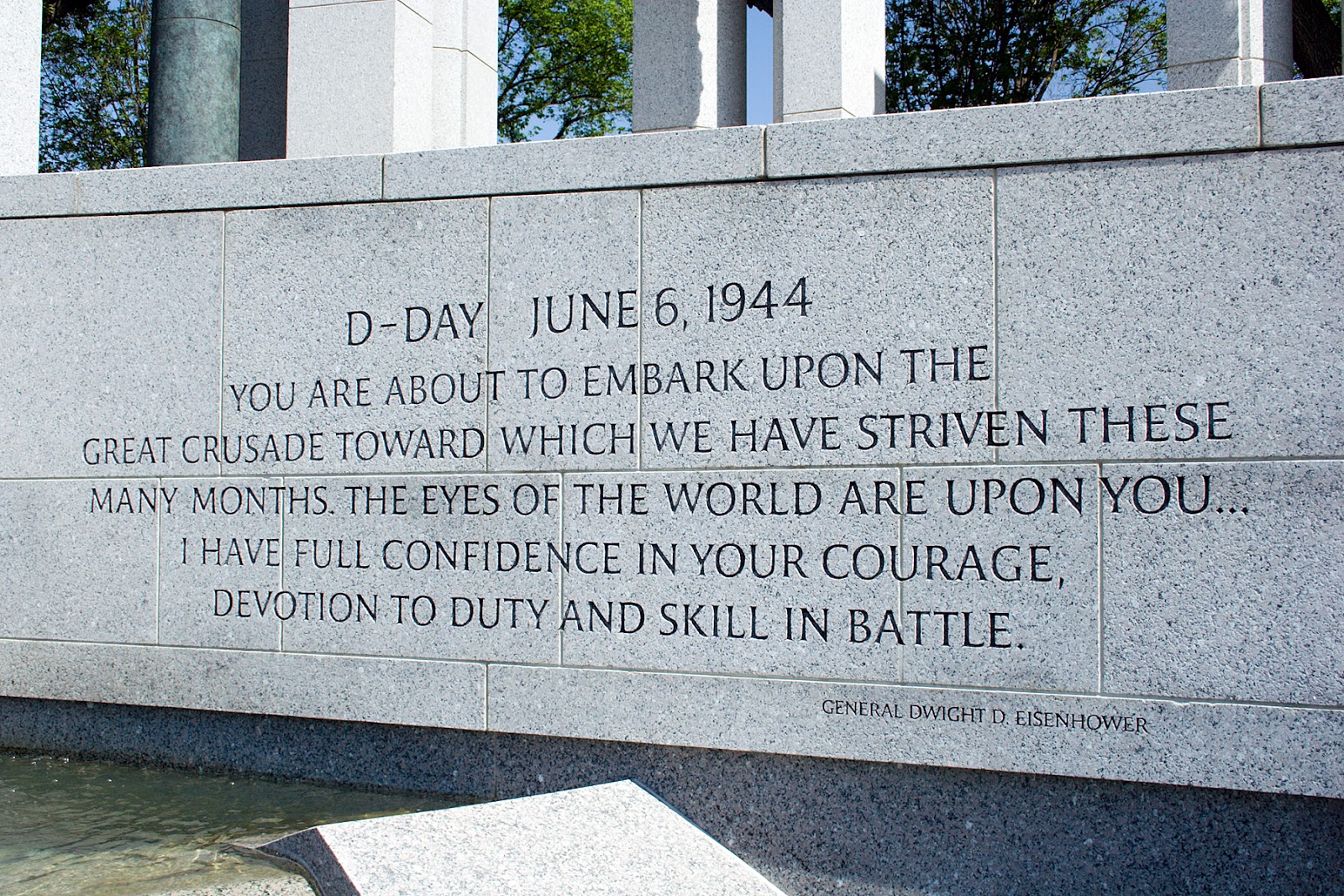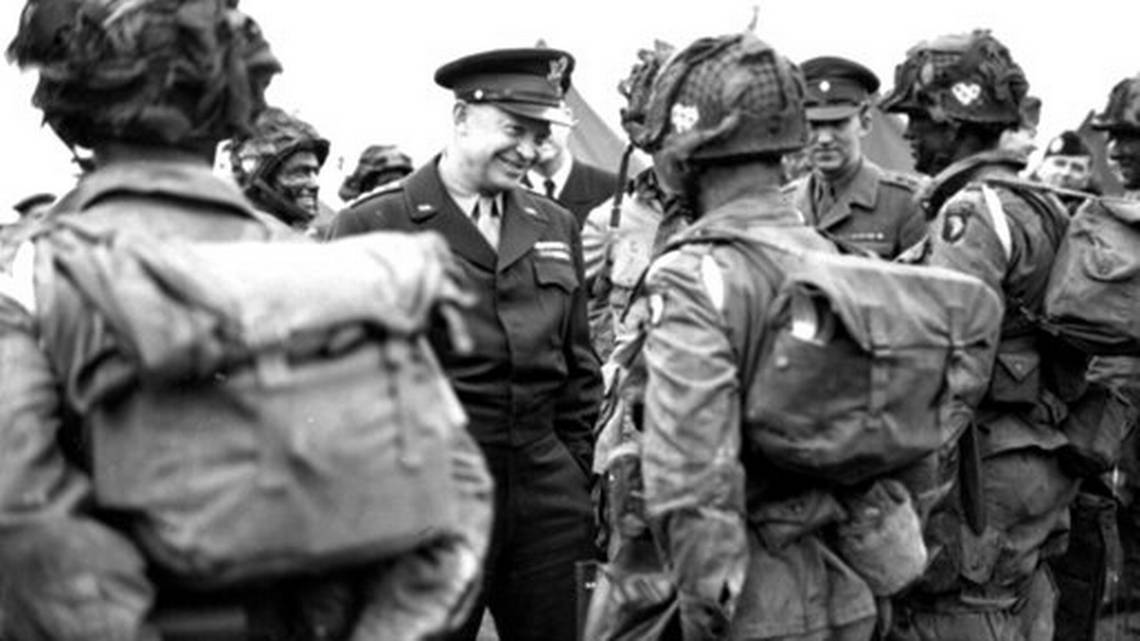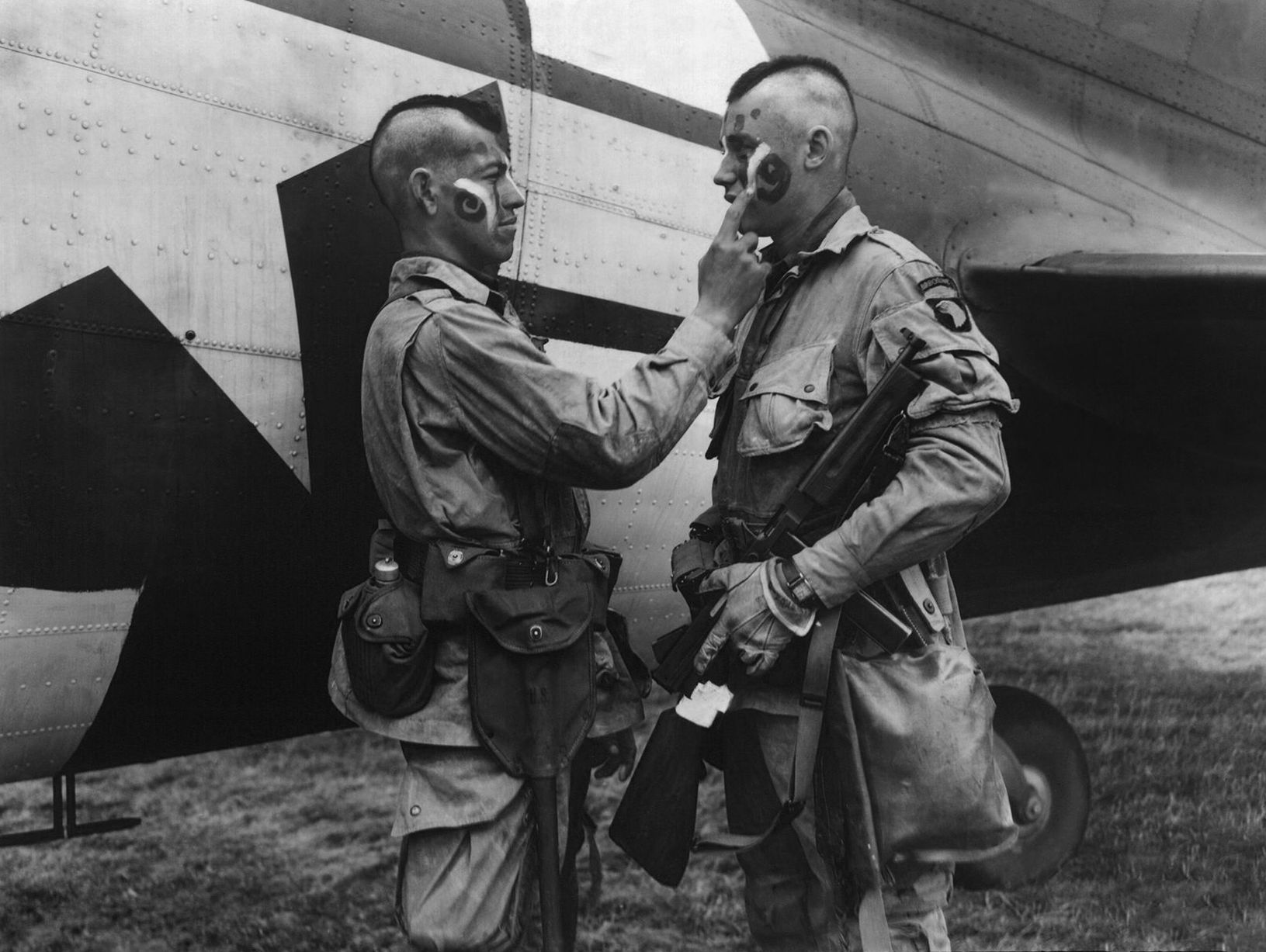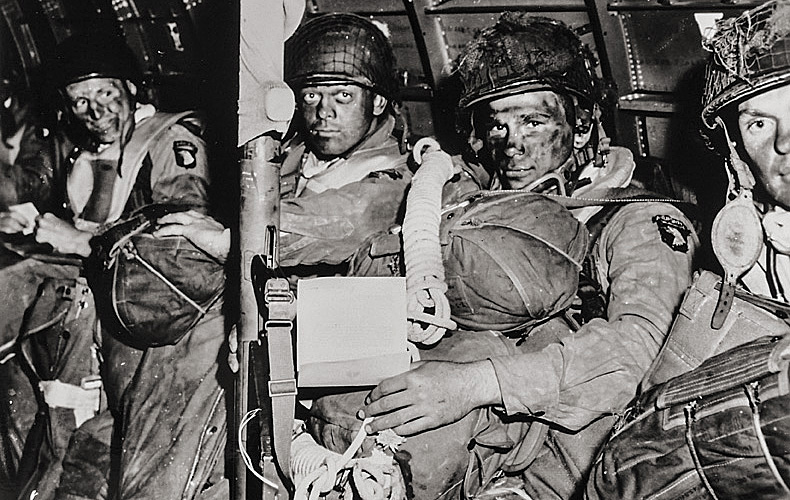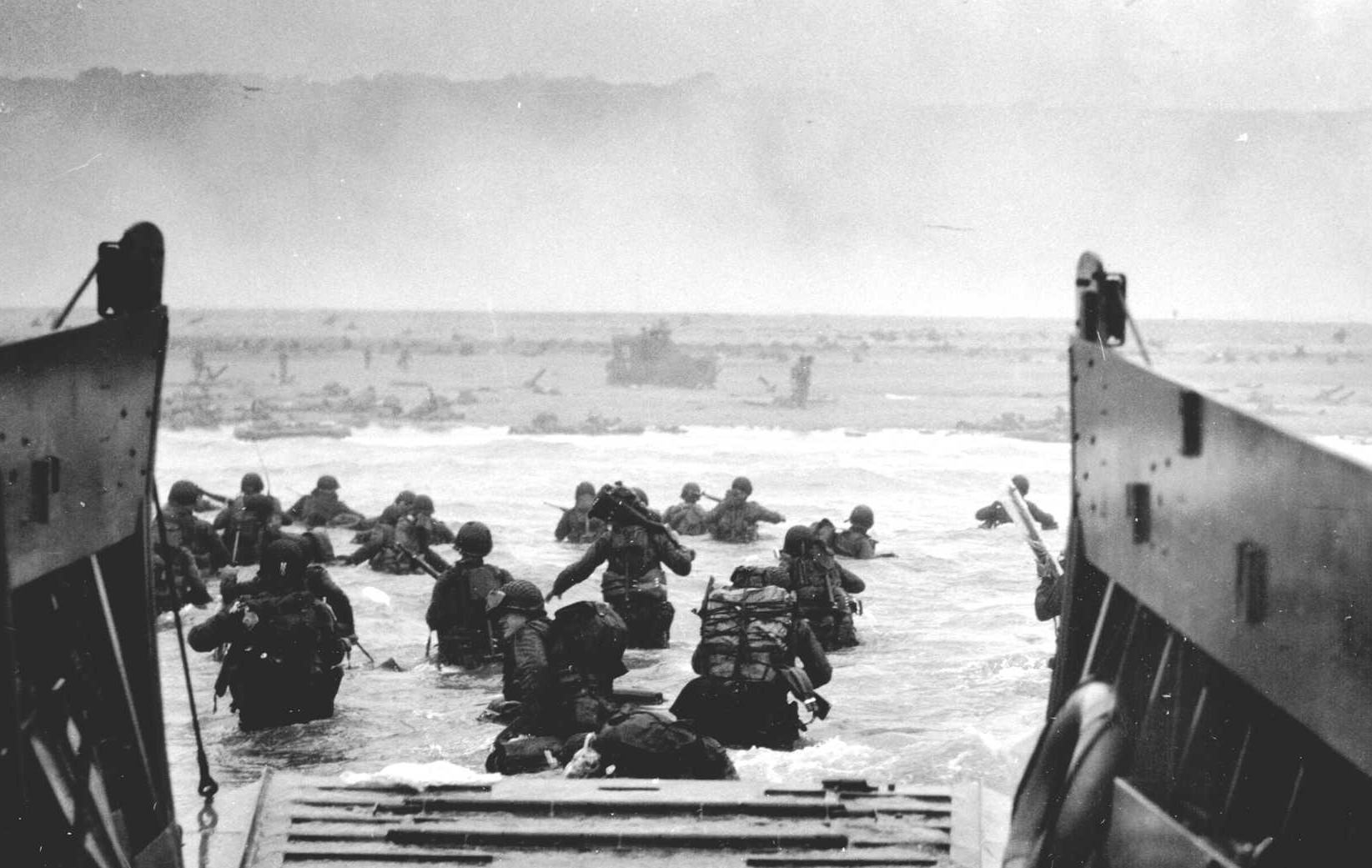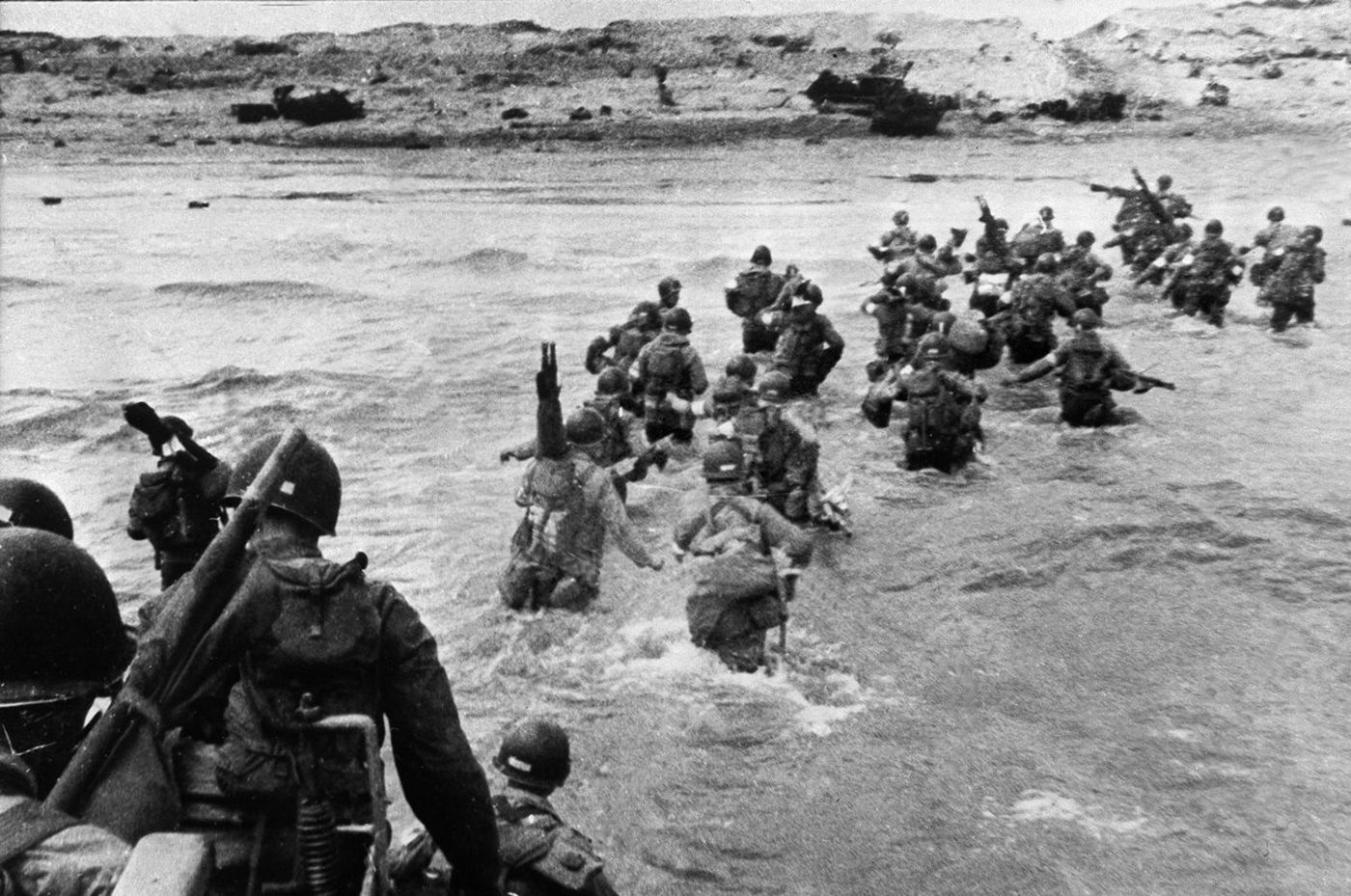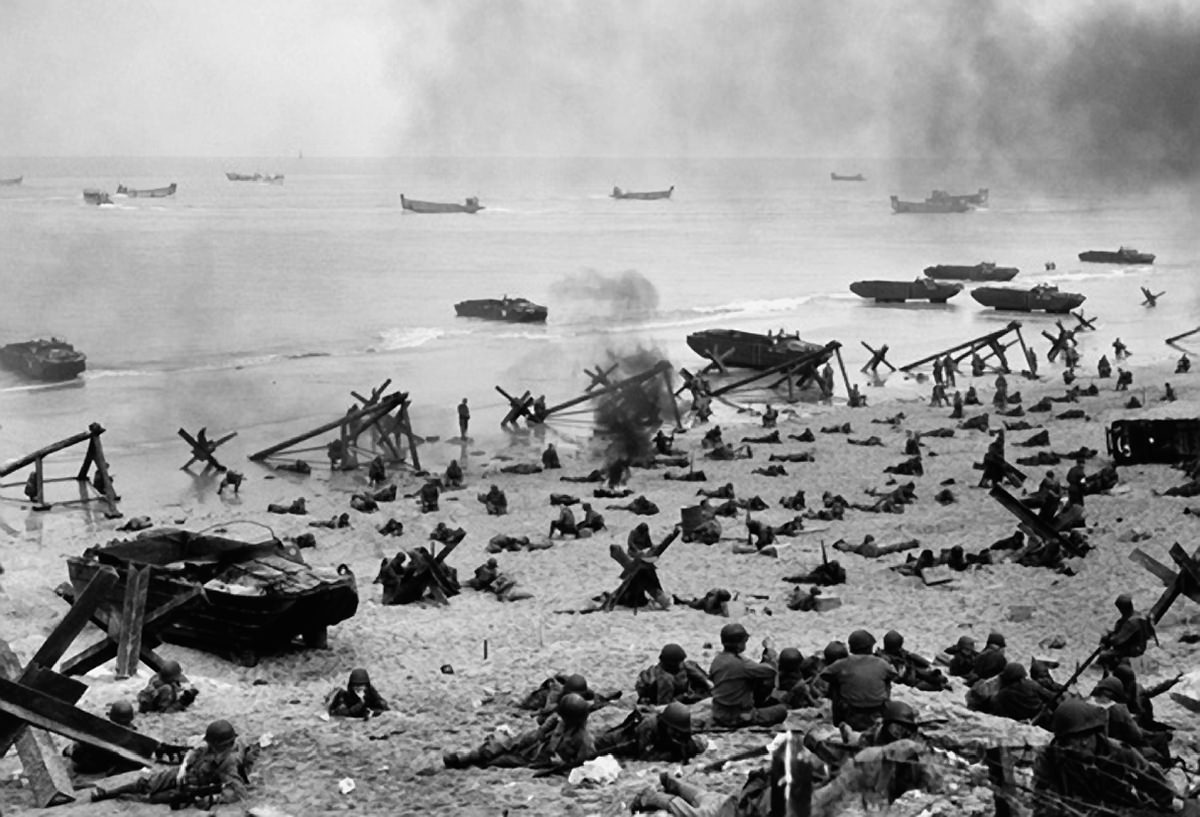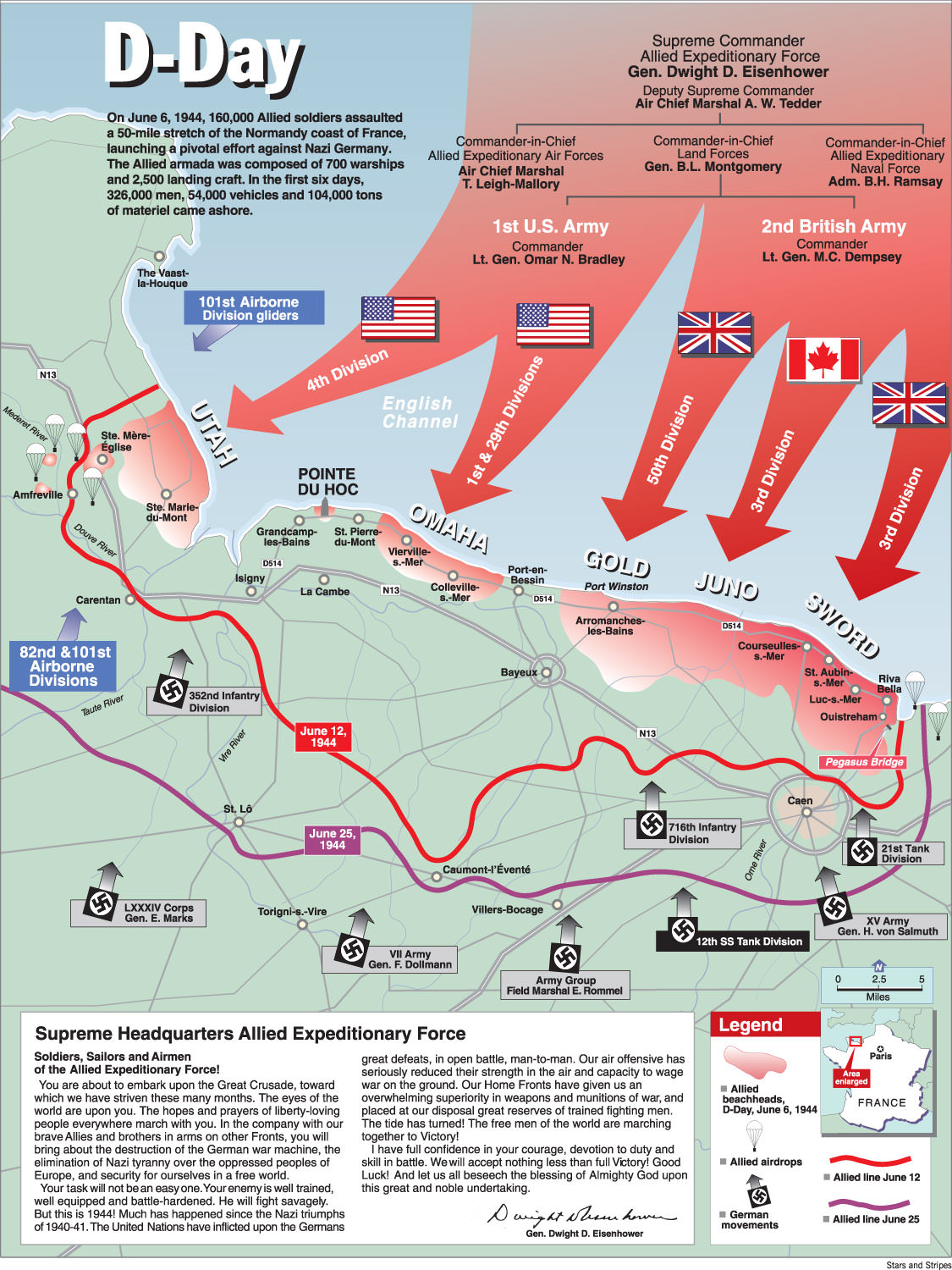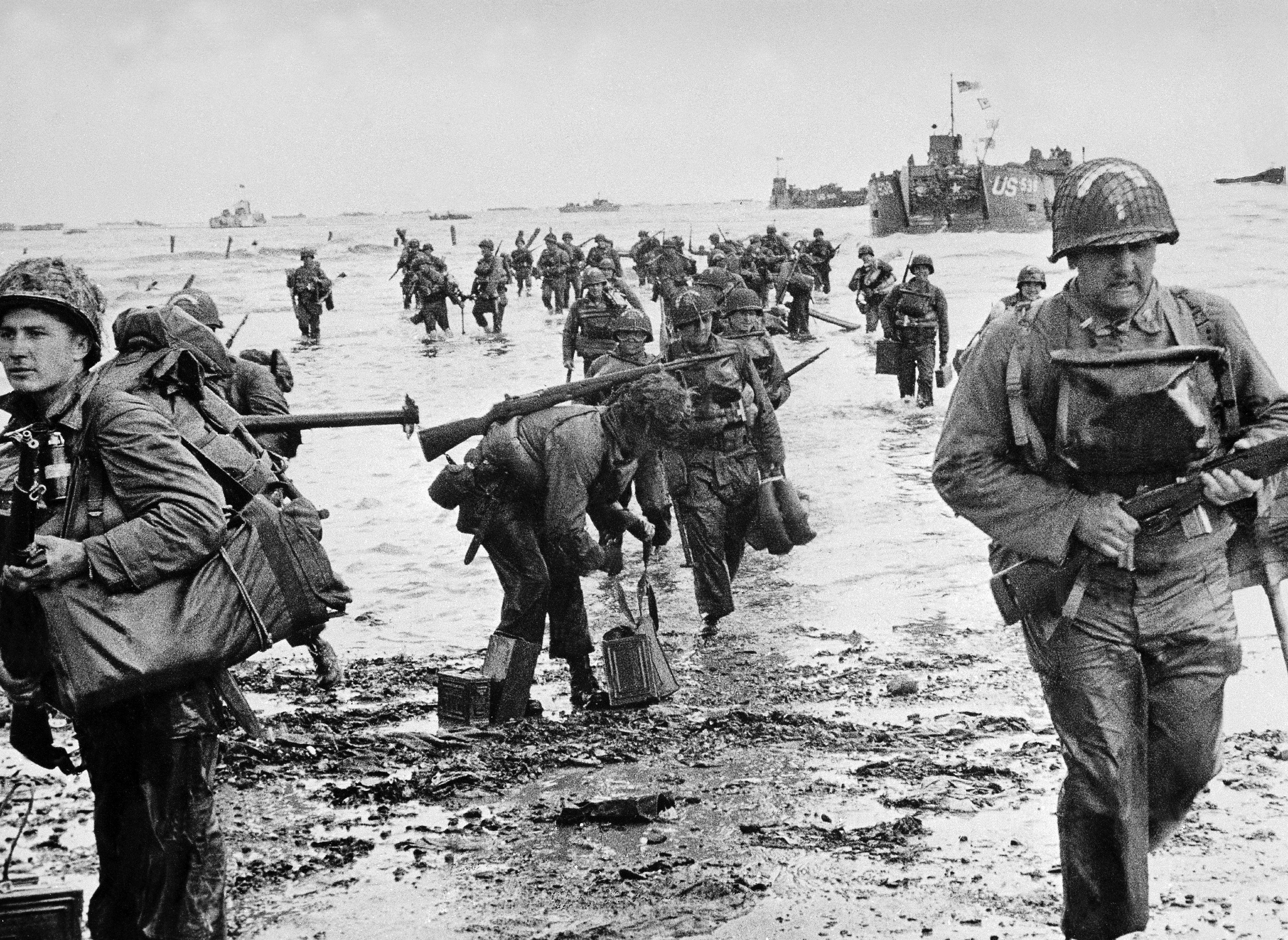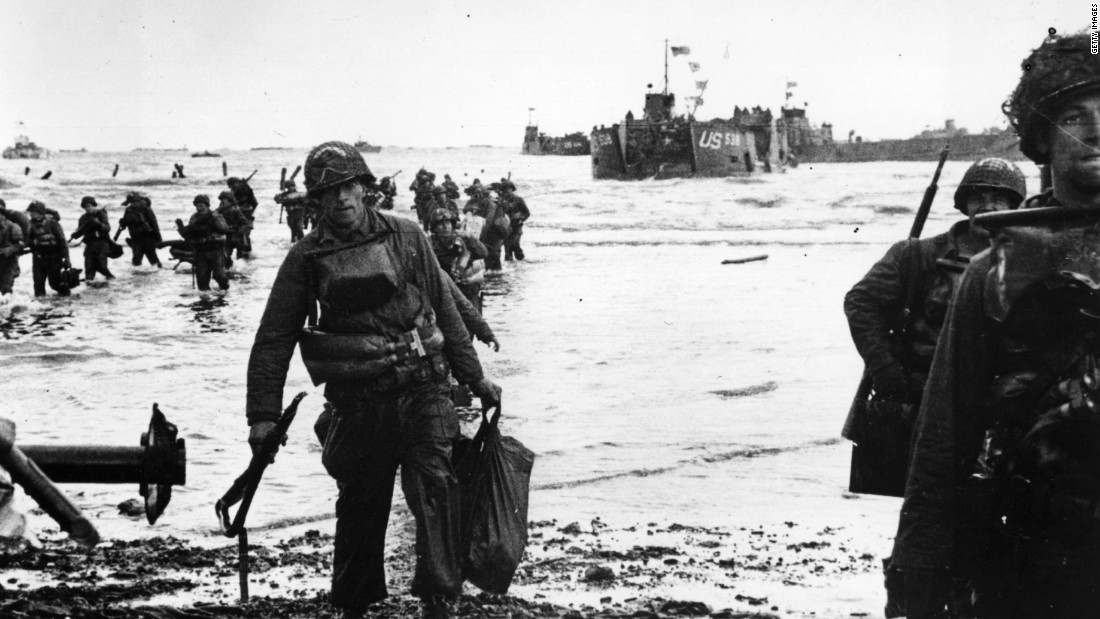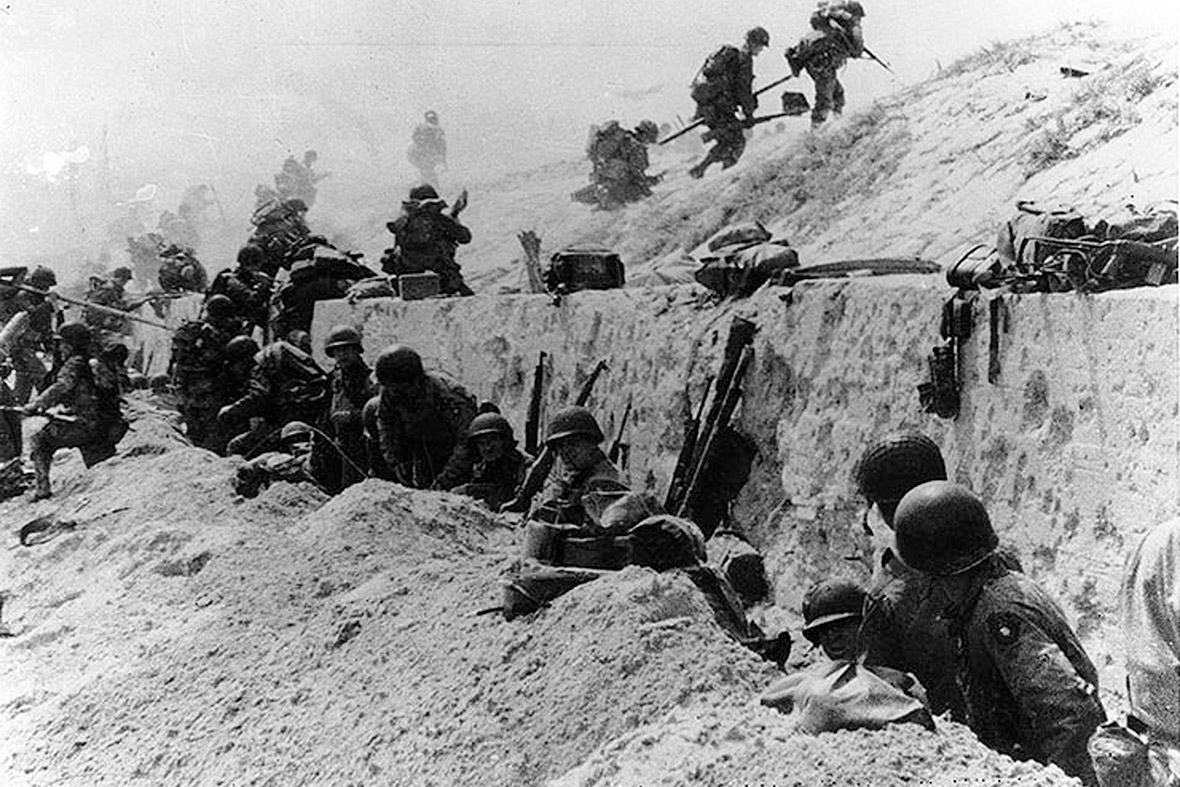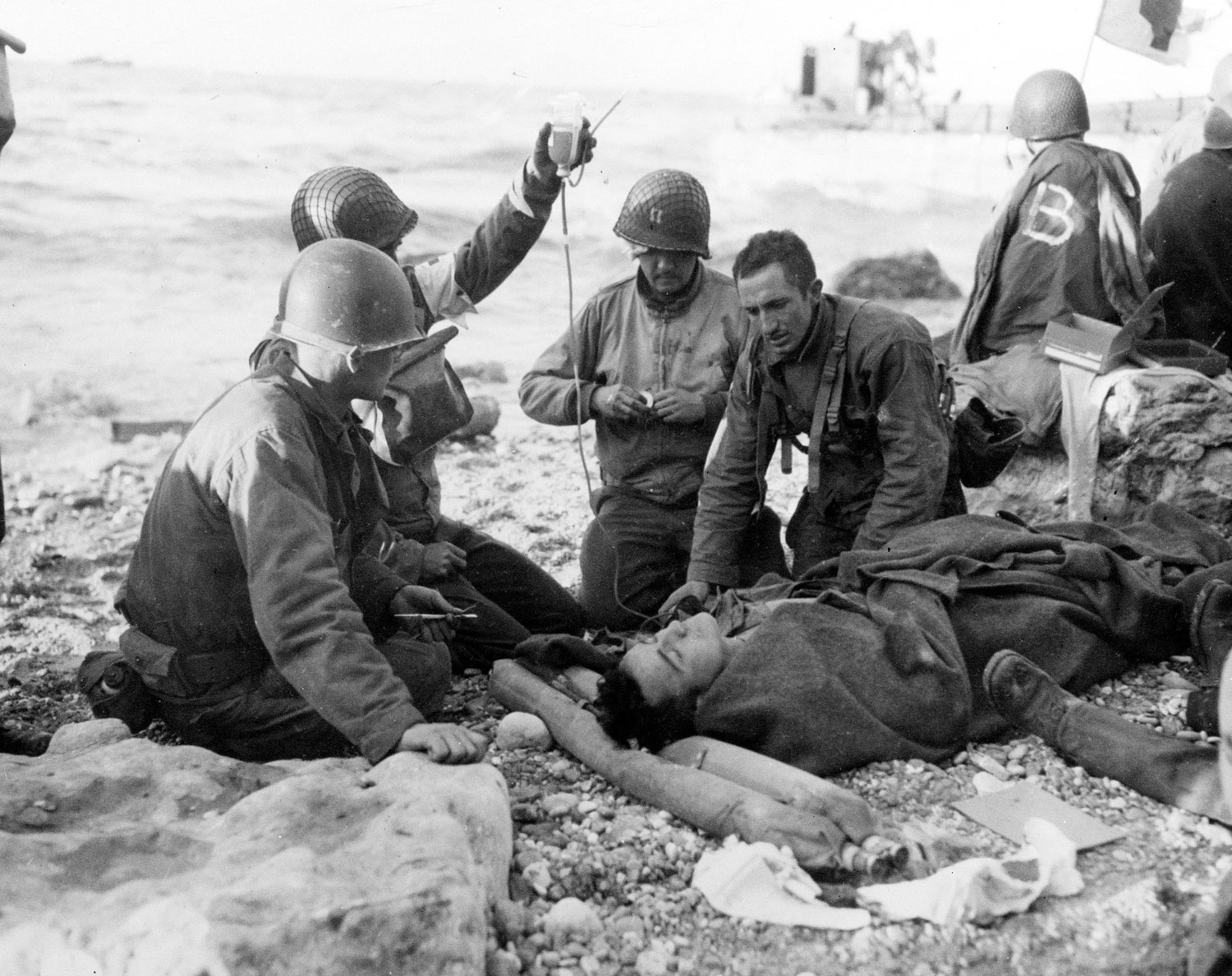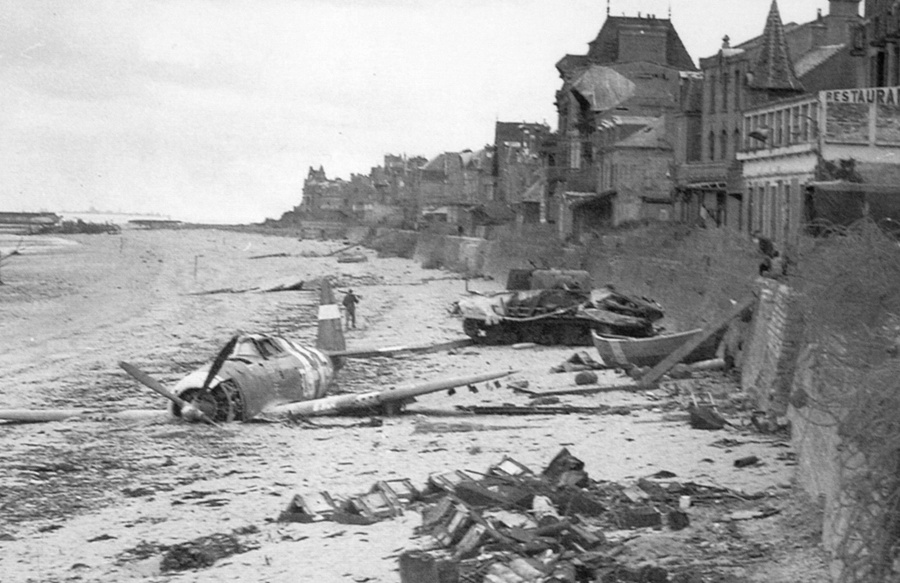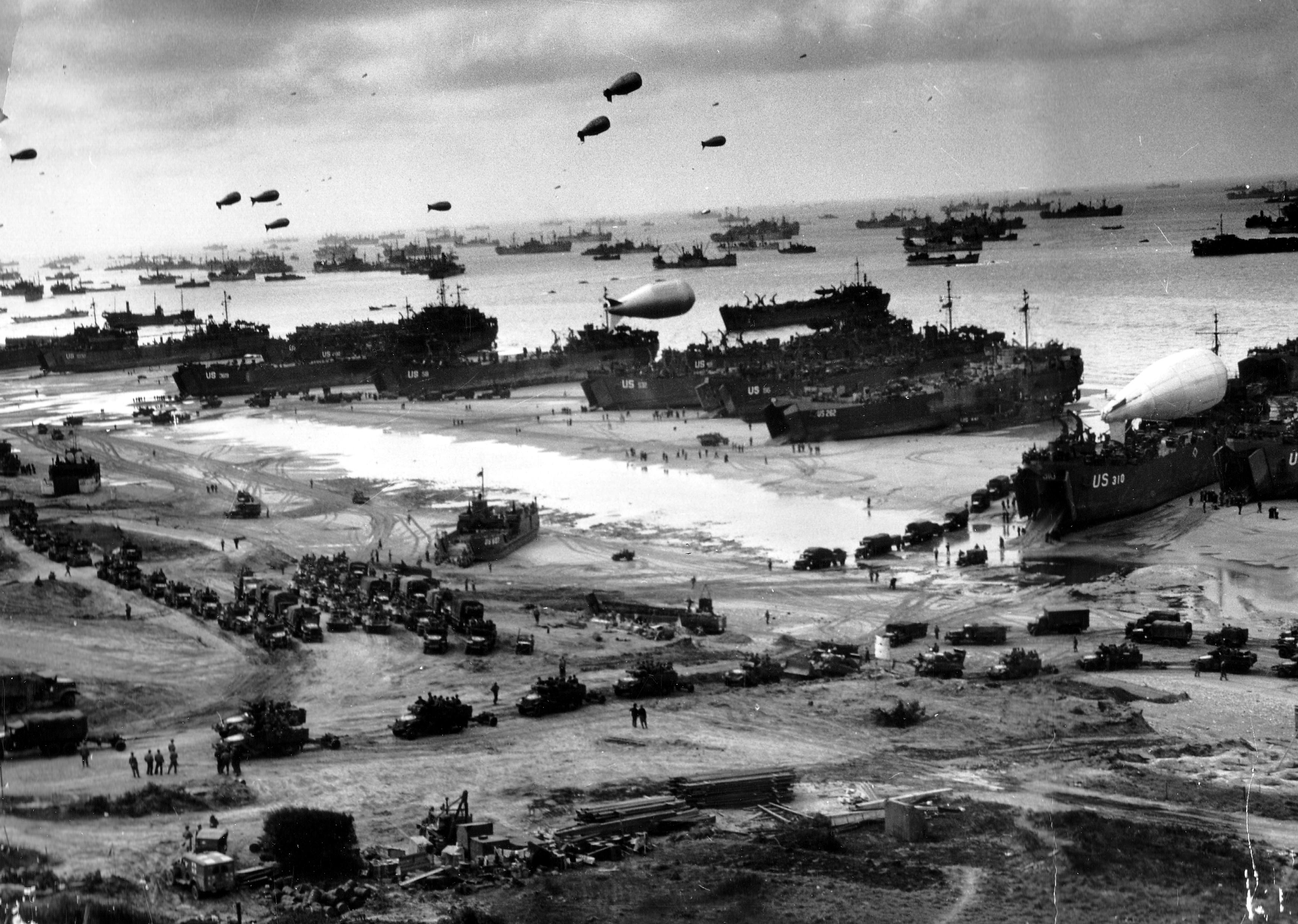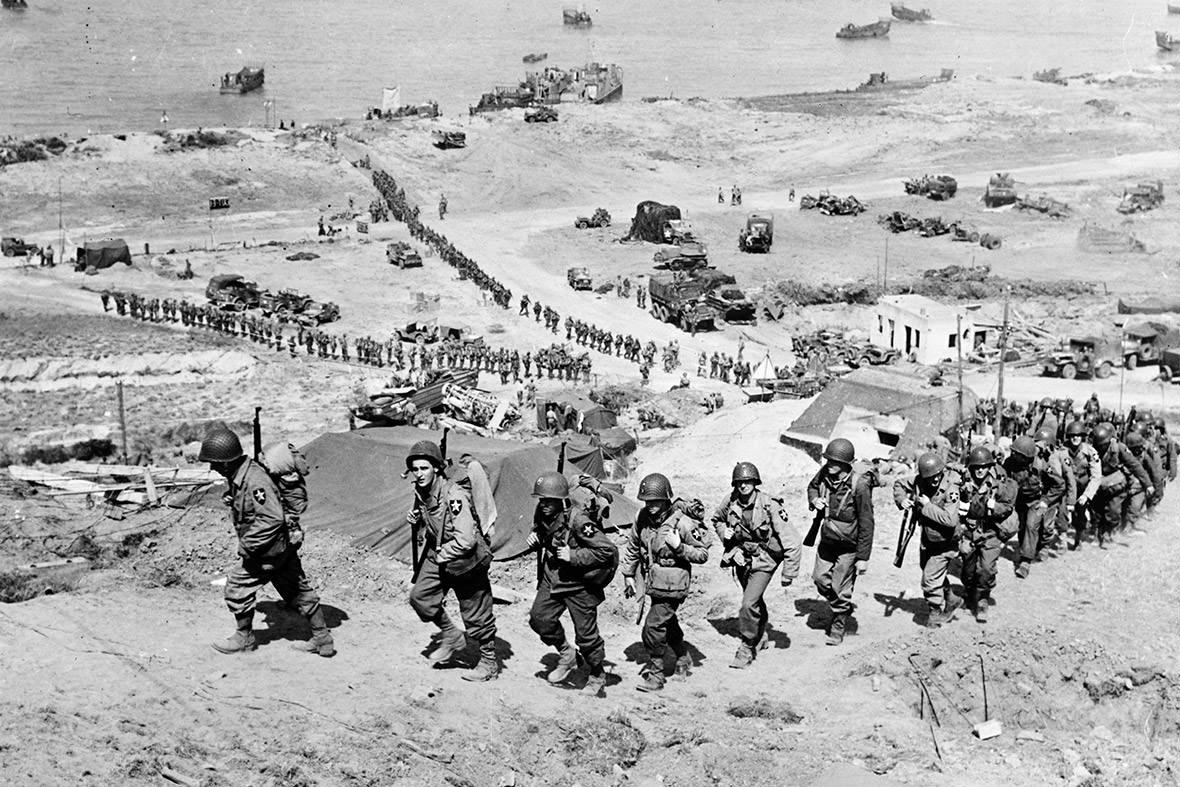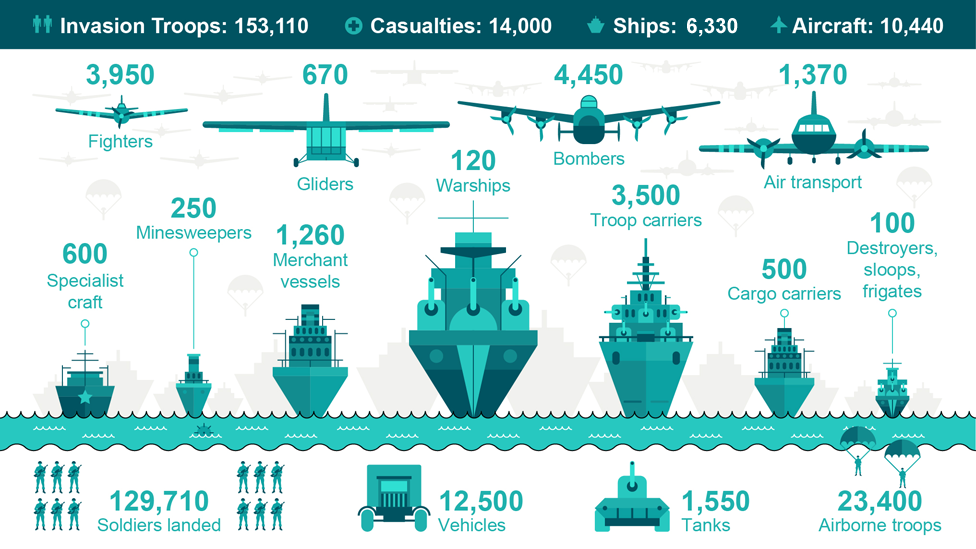My daughter works at one of the largest Army bases in America and yesterday she received this beautiful email from her commanders.
Seventy-five years ago today, this nation led one of the most complex and
daring military operations in the history of warfare. The Allied invasion of
Normandy on June 6th, 1944 was the culmination of over three years of
relentless work to organize, train, and equip a force capable of breaking
into "Fortress Europe" and defeating the Nazi regime. Despite General
Eisenhower's bold declaration that "we will accept nothing less than full
victory," the likelihood of success on the eve of the operation was still
very uncertain.
In fact, after giving the command to execute the operation, Eisenhower
drafted a second message that read, "our landings.have failed to gain a
satisfactory foothold and I have withdrawn the troops." The Germans had
thousands of soldiers dug into concrete pillboxes, defended by mines,
machine guns, and artillery, and were expecting a cross-channel invasion at
any time. As the Allies' 5,000 ships, 13,000 planes, and 160,000 Soldiers
departed England, Operation Overlord was underway.
During hours of darkness, Allied airborne troops began dropping behind enemy
lines. The paratroopers were badly scattered, but they fought fiercely,
causing confusion among the German commanders, keeping the enemy troops
occupied. Meanwhile, the largest amphibious landing force ever assembled
began moving through the rough waters toward the Normandy coast. As the
troops hit the beaches, they faced devastating machine gun fire that turned
the shoreline into a vast killing field. Despite heavy casualties, the
Allies fought inward and by nightfall had seized a foot-hold in Western
Europe, never to be dislodged.
Many of the lessons from that day are timeless. A high level of physical
fitness was needed to move through the difficult terrain. Soldiers had to be
experts in marksmanship and maintaining their weapons. The ability to call
for indirect fires was essential to enabling maneuver. Rapid medical aid was
the difference between life and death for those wounded on the battlefield.
And units had to continue the mission even when they lost all
communications.
In today's new era of Great Power Competition, we must be as equally ready
to endure the rigors of combat as the "greatest generation" was at Normandy.
The future battlefield will be unrelenting; units will constantly be on the
move and under attack. A high level of physical fitness will be required to
outmaneuver the enemy and reach the objective. Soldiers at all echelons must
master the fundamentals - shoot, move, communicate, protect, and sustain -
in an environment of increased lethality.
Many of the conditions we have grown accustomed to over the past eighteen
years will not exist in future battles. Control of the air will be
contested; Forward Operating Bases will not provide safe haven; units will
be continuously targeted by enemy fires; and communications and navigation
systems will be intermittent at best. We must be able to avoid enemy
detection, sustain ourselves in austere conditions, and navigate with a map
and compass, among many other basic tasks. These skills are the
responsibility of our NCO Corps and will be vital to success in future
conflicts.
As Eisenhower knew at Normandy, in warfare, nothing is for certain. Against
great odds, the troops who assaulted the beaches on D-Day achieved victory.
Their legacy calls on us to be ready when our time comes. We must be masters
in the basics and prepared to fight on a moment's notice. Regardless of
branch, unit, or component, every Soldier will have a role in the next
conflict. Together, we will preserve our freedom just as our predecessors
did seventy-five years ago.
